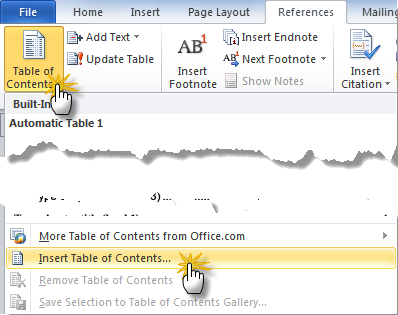

Your table of contents should appear in your document. In the example above, I entered 1 across from Heading 2 because I want my table of contents to begin with Heading 2 and exclude Heading 1.įigure 11. Enter the sequence of the heading levels you want to appear in the TOC level text boxes in the Table of Contents Options dialog box.Select the Options button in the Table of Contents dialog box.However, you can manually include or exclude individual heading levels within your custom table of contents.
#How do you remove table formatting in word how to
How to Choose Individual Heading Levels for a Table of Contentsīy default, Word’s tables of contents include text formatted with sequential heading styles (e.g., Heading 1, Heading 2, Heading 3, etc.). (Optional Step) Select additional options concerning page numbers and tab leaders, which are the dots, dashes, or lines that appear before the page number.įigure 8.Select the number of levels you want to include in the Show levels menu.(The From Template option is based on the styles established in your current template.) Select a visual style from the Formats menu in the Table of Contents dialog box.Select Custom Table of Contents from the drop-down menu.įigure 5.Select the Table of Contents button (see figure 2).Select the References tab in the ribbon (see figure 1).
#How do you remove table formatting in word pro
Pro Tip: The custom table of contents option does not automatically create a title (e.g., Table of Contents or Contents), so be sure to leave a blank line above your cursor where you can enter a title later.

Word’s custom tables of contents provide formatting options and allow you to include or exclude specific heading levels. Built-in table of contents How to Create a Custom Table of Contents


 0 kommentar(er)
0 kommentar(er)
